Gypsy/Travellers in Scotland - A Comprehensive Analysis of the 2011 Census
This report brings together analysis previously published to provide a comprehensive and wide ranging evidence base on Scotland’s Gypsy/Travellers. It presents analysis of key areas such as health, education, housing, transport and economic indicators to reveal important information on the lives and life chances of Gypsy/Travellers.
4. Health
In 2011 Gypsy/Travellers in Scotland, compared to the population as a whole, were more likely to report a long-term health problem or disability and were more likely to report bad or very bad general health.
The following analysis describes how the health of Gypsy/Travellers compares to other ethnic groups, and age-standardised data shows that compared to the ‘White: Scottish’ group Gypsy/Travellers were twice as likely to have a long-term health problem.
Chart 13: Gypsy/Travellers by Long-term Health Problem or Disability, Scotland, 2011
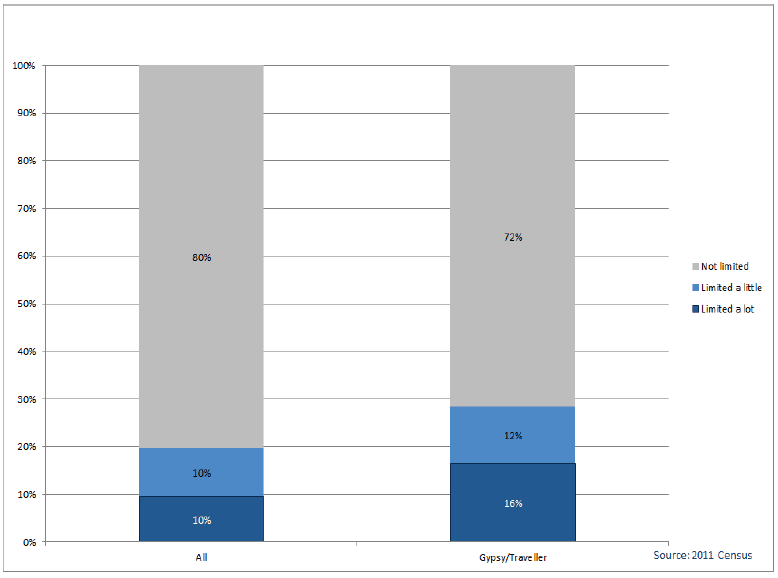
Gypsy/Travellers were more likely than the general population to have a limiting long-term health problem or disability (28 per cent compared to 20 per cent) despite the fact they had a much younger age profile. Within this, they were also more likely to be limited ‘a lot’ by a long-term health problem or disability (16 per cent compared to 10 per cent).
Chart 14: Ethnic Inequalities in Health for Women, 2011 - Age-standardised ratios of long-term limiting health problem or disability for ethnic groups compared to the 'White: Scottish' group
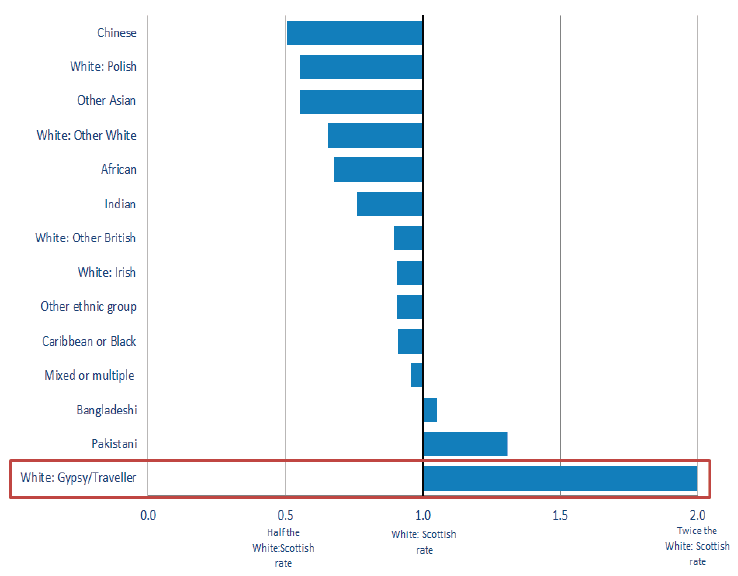
Chart 14 shows age-standardised rates of long-term limiting health problem or disability in order to take into account the different age profiles of ethnic groups. In 2011 there was wide variation amongst women from different ethnic groups. Women from three groups - Bangladeshi, Pakistani and Gypsy/Traveller - recorded higher rates of 'health problem or disability' than women from the 'White: Scottish' ethnic group. Gypsy/Traveller women recorded twice the rate.
The picture for women in Scotland was similar across ethnic groups to that of England and Wales. Similar to the picture in Scotland, Gypsy/Traveller women recorded around twice the rate of the 'White: British' group.
Chart 15: Ethnic Inequalities in Health for Men, 2011 - Age-standardised ratios of long-term limiting health problem or disability for ethnic groups compared to the 'White: Scottish' group
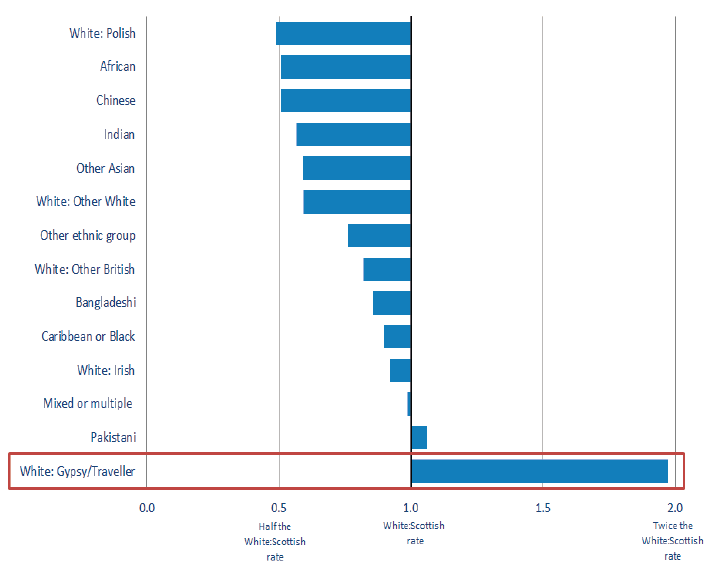
Chart 15 shows that, in 2011, men from only two ethnic groups - Pakistani and Gypsy/Traveller - recorded higher rates of 'health problem or disability' than men from the 'White: Scottish' ethnic group. Similar to the results for women, Gypsy/Traveller men recorded almost twice the rate.
Gypsy/Traveller men in England and Wales also recorded almost twice the rate of the 'White: British' group.
Chart 16: Gypsy/Travellers by long-term health conditions, Scotland, 2011
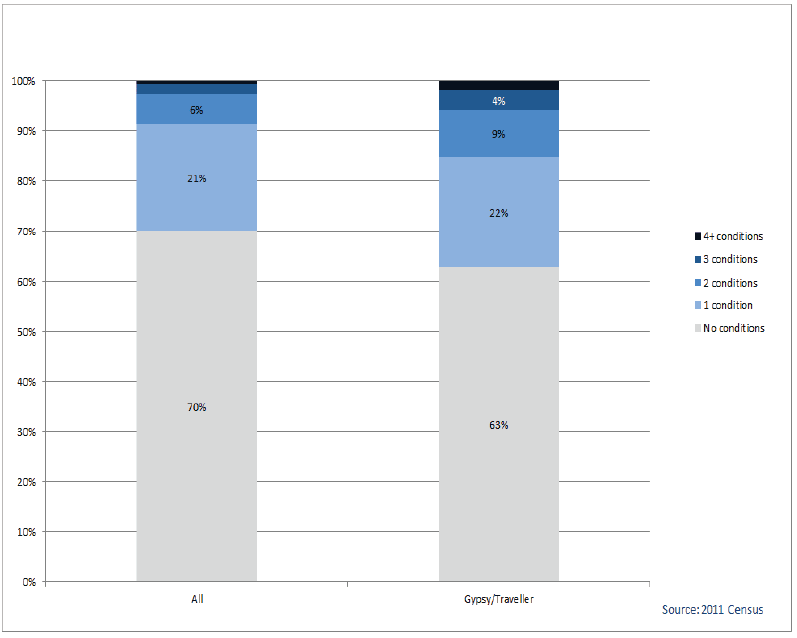
Gypsy/Travellers were more likely to report long-term health conditions than the general population. Thirty seven per cent reported at least one condition compared to 30 per cent of the population as a whole. They were twice as likely to report three or more categories of condition (6 per cent compared to 3 per cent).
Chart 17: Gypsy/Travellers by General Health, Scotland, 2011
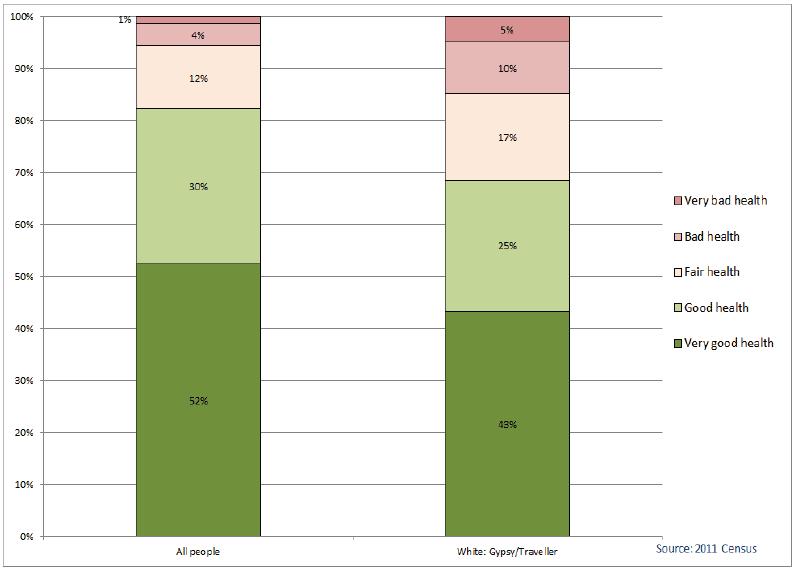
Only 69 per cent of Gypsy/Travellers reported ‘good’ or ‘very good’ health compared to 82 per cent of the general population. This is despite Gypsy/Travellers having a much younger age profile.
Gypsy/Travellers were three times more likely to report ‘bad’ or ‘very bad’ health compared to the general population (15 per cent and 6 per cent respectively). They were around five times more likely to report very bad health.
Chart 18: Ethnic Inequalities in Health for Women, 2011 - Age-standardised ratios of General Health (Bad or Very Bad) for ethnic groups compared to the 'White: Scottish' group
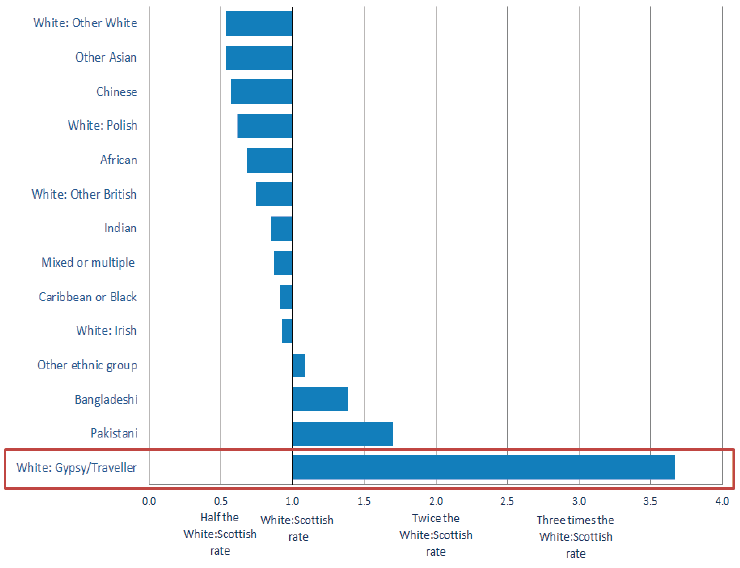
Chart 18 shows that the age-standardised rate of 'poor general health' for women by ethnic group followed a similar order to the 'health problem or disability' data shown in Chart 14.
Gypsy/Traveller women were most likely to report that they had 'poor general health' - this was over three and a half times the rate of the 'White: Scottish' ethnic group.
Chart 19: Ethnic Inequalities in Health for Men, 2011 - Age-standardised ratios of General Health (Bad or Very Bad) for ethnic groups compared to the 'White: Scottish' group
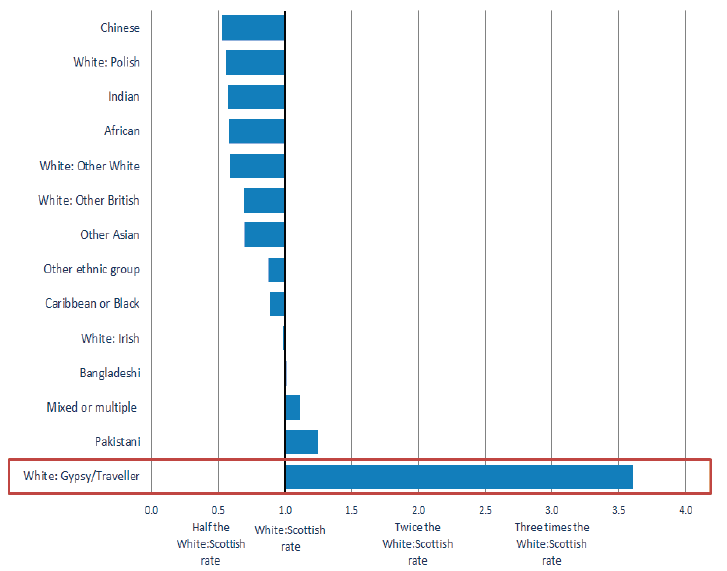
Chart 19 shows that the age-standardised rate of Gypsy/Traveller men with 'poor general health' was over three and a half times that of the 'White: Scottish' ethnic group. This was similar to the result for Gypsy/Traveller women shown in Chart 18.
Chart 20: Gypsy/Travellers by provision of unpaid weekly care, Scotland, 2011

The proportion of Gypsy/Travellers providing no unpaid weekly care[11] was slightly lower than the general population, as was the proportion providing 1-19 hours unpaid care per week.
However, Gypsy/Travellers were more than twice as likely to provide a high level of unpaid care (50 or more hours per week) than the general population.
Contact
Email: Mhairi Wallace
There is a problem
Thanks for your feedback